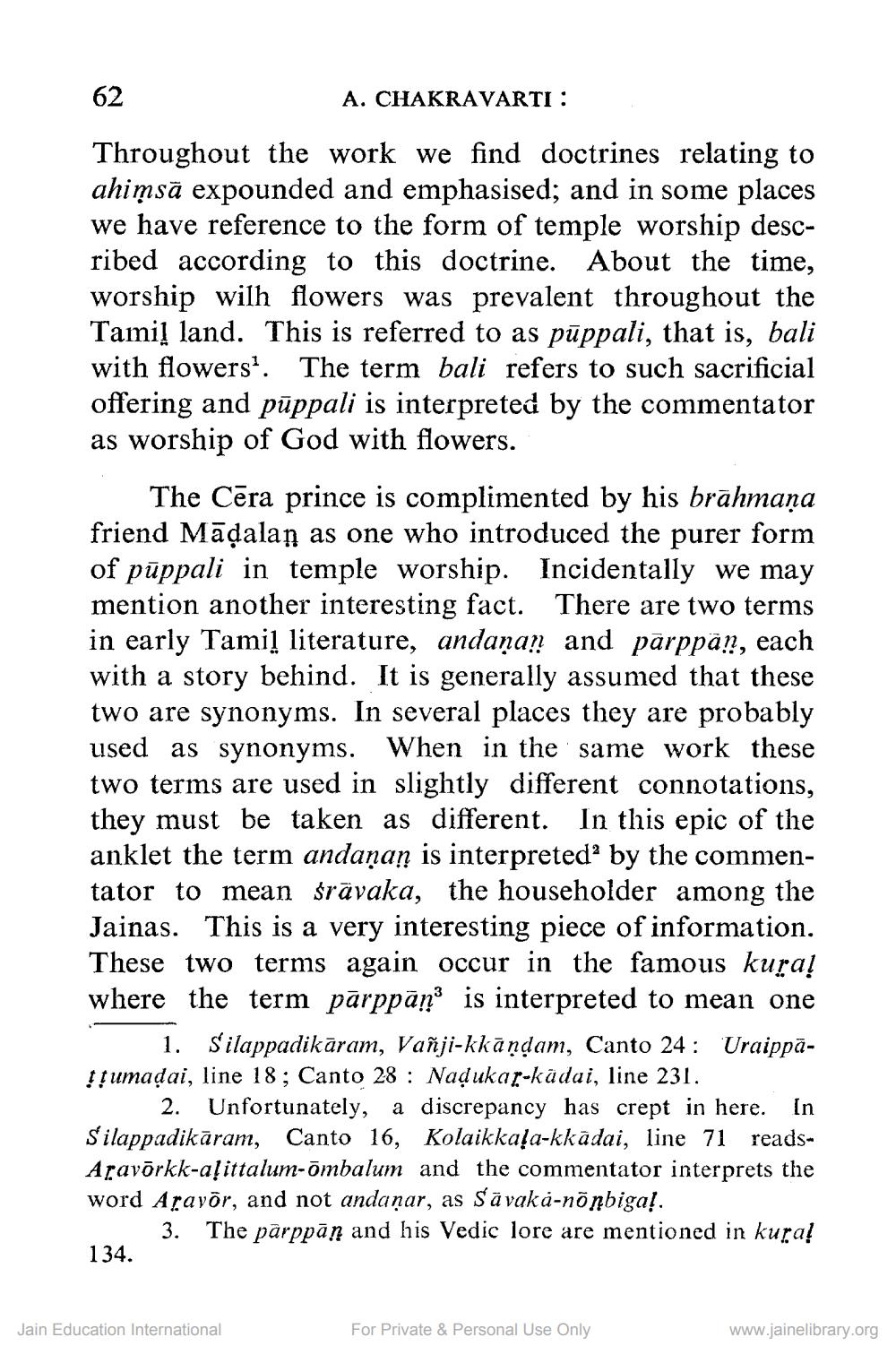________________
62
A. CHAKRAVARTI :
Throughout the work we find doctrines relating to ahiņsā expounded and emphasised; and in some places we have reference to the form of temple worship described according to this doctrine. About the time, worship wilh flowers was prevalent throughout the Tamil land. This is referred to as pūppali, that is, bali with flowers'. The term bali refers to such sacrificial offering and pūppali is interpreted by the commentator as worship of God with flowers.
The Cēra prince is complimented by his brāhmaṇa friend Māļalan as one who introduced the purer form of pūppali in temple worship. Incidentally we may mention another interesting fact. There are two terms in early Tamil literature, andaņa! and pārppäạ, each with a story behind. It is generally assumed that these two are synonyms. In several places they are probably used as synonyms. When in the same work these two terms are used in slightly different connotations, they must be taken as different. In this epic of the anklet the term andaņaņ is interpreted by the commentator to mean frävaka, the householder among the Jainas. This is a very interesting piece of information. These two terms again occur in the famous kuraļ where the term pārppän is interpreted to mean one
1. Silappadikāram, Vañji-kkāndam, Canto 24 : Uraippa! fumadai, line 18; Canto 28 : Nadukar-kādai, line 231.
2. Unfortunately, a discrepancy has crept in here. In S'ilappadikāram, Canto 16, Kolaikkala-kkādai, line 71 readsApavõrkk-aļittalum-õmbalum and the commentator interprets the word Arayõr, and not andañar, as Sāvaka-nõņbiga!.
3. The pārppāņ and his Vedic lore are mentioned in kura! 134.
Jain Education International
For Private & Personal Use Only
www.jainelibrary.org




